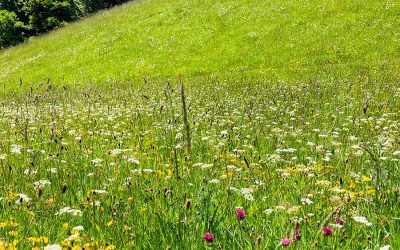Climbing Roses
Flaming June has arrived at last, it was a long time coming and it took some of the roses a while to get going but the display now is glorious. A garden feels incomplete without roses and I always look to include some in my garden designs and being a lover of climbing...
Wild Flower Meadow
We are now in the fifth spring of our meadow renovation and we are reaping the rewards of all the hard work that has been done over the past few years. We can now confidently call this a wild flower meadow and we have noted over 40 different species of wild flower all...
The Making of a Meadow
A natural English wildflower meadow is such a beautiful sight but sadly due to intensive farming there are very few remaining. Where I live in Cheshire 99% of the wildflower meadows have been lost so every little piece of meadow that can be restored or newly created...
Foxgloves
I absolutely love foxgloves, they have a magical fairy tale quality and they enhance almost any planting design. I also love the way they pop up all over the place and I am happy to leave them in their chosen spot. Our native foxglove, Digitalis purpurea, is a welcome...
Bulbs
Spring flowering bulbs lift the spirits after the dark winter days and bring hope that summer is just around the corner. I am lucky enough to live on a beautiful country lane lined with colourful bulbs. These start early in the year with clumps of delicate snowdrops...
Garden Birds
Our gardens are a haven for wildlife and particularly birds. If we keep our gardens filled with a diverse range of plants the birds will visit. It is very restful to sit quietly and watch the birds pottering about, it can also become a bit addictive trying to spot as...
Pots & Containers
Pots and Containers in Garden Design Pots and containers used in garden design are the decorative details that give the garden individuality and personality. They can be used as focal points, to frame an entrance or view, to introduce height, colour, texture and form....
Winter Planting
January and February are particularly miserable months with the enjoyment of Christmas a dim and distant memory and the summer months seeming so far away; this is when some thoughtful winter planting can lift the spirits. The weather and the short days don't help but...
Plants for Clay Soil
As I am currently working on a garden with clay soil, I thought it would be good to discuss some suitable plants for clay soil. Clay soil can cause a sharp in take of breath, but I would much prefer a clay soil to a sandy one. The garden I have designed is typically...
Garden Worthy Trees
Garden Worthy Trees Now that spring has finally decided to arrive in May, the sight of all the blossom is a wonderful thing. Equally as lovely are the new fresh leaves unfurling on the trees making everywhere look sparkly and new. I am not happy unless I am surrounded...










